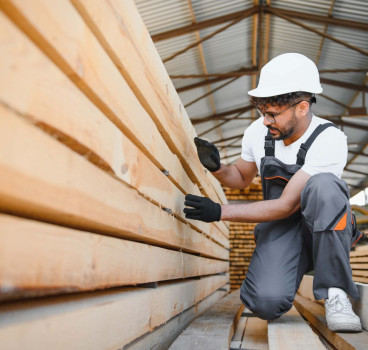Will construction solve the crisis of suicides and mental health challenges?
The construction industry continues to deal with a silent epidemic - with a workforce, seemingly burdened by relentless demands, job insecurities and mental health struggles. It all adds up to a crisis where construction workers now face suicide rates that outpace almost every other sector. It’s also a situation the industry is well aware of, but in spite of ongoing initiatives, mental health remains a problem that is almost impossible to solve, writes John Ridgeway.
I first wrote about this subject some 10 years ago and while much has been done since then with new counselling schemes and awareness programmes, suicide rates remain at alarmingly high rates, possibly because “macho” builders find it difficult to discuss their feelings. It is why we are encouraging co-workers to look for warning signs that a colleague might need help. Suffering in silence when your world is collapsing inside, is no longer an option – just look at the statistics.
From Australia’s harrowing figures of six times more suicides than worksite fatalities to North America’s construction worker suicide rate being four times the national average, the data paints a sobering picture. Europe tells a similar story, with male construction workers facing a suicide risk three times higher than the general population.
So please stay with me as we take a closer look into the root causes of this crisis and examine the global efforts underway to address it while charting the progress - or lack thereof - over the past 20 years in Australia, North America and Europe
Australia
In Australia, the mental health crisis among construction workers is starkly evident, with male workers facing suicide rates six times higher than fatalities from workplace accidents. This group experiences suicide rates 53% higher than the general male population. Young workers, particularly those aged 15–24, are disproportionately affected, partly due to industry-specific pressures that include job insecurity, high physical demands and a culture that often discourages seeking help.
The "tough guy" culture prevalent in construction, often discourages vulnerability, fostering stigma around mental health discussions. Many young workers also face precarious employment, with short-term contracts or casual work arrangements, exacerbating financial stress and instability.
Furthermore, heavy labour and risk of injury, combined with insufficient access to mental health services, leave many workers struggling to cope. Young apprentices in particular, often away from family support networks, may feel isolated on-site, especially if they are working in remote or rural areas.
Recent research by MATES in Construction, a leading Australian mental health initiative, has found that suicide rates among apprentices are disproportionately high. They account for a significant number of cases despite making up a smaller portion of the workforce. Additionally, the Australian Bureau of Statistics (ABS) highlights that construction workers are among the top occupational groups at risk of suicide.
Programmes like MATES in Construction and Lifeline Australia are actively targeting this issue with initiatives such as ASIST (Applied Suicide Intervention Skills Training), which teach workers to identify and assist colleagues showing signs of distress. "Connectors" on-site are trained to recognise and provide initial support for mental health concerns, bridging the gap between workers and professional help. Specific efforts especially focus on apprentices, providing mentorship and fostering a culture of openness early in their careers.
While progress has been made, persistent stigma and a lack of widespread adoption of mental health programmes highlight the need for further industry-wide changes. Expanding accessibility to mental health services, normalising conversations about well-being and addressing systemic issues like job security, remain crucial to reducing suicide rates in Australia's construction sector.
North America
In the United States, construction is the leading industry for suicides, with rates reaching 45.3 per 100,000 workers, a figure nearly four times the national average for men. These alarming statistics underscore a significant mental health crisis within the sector, one exacerbated by a combination of workplace and societal factors.
High job demands are a major factor. The nature of construction work involves irregular hours, physically taxing tasks and deadlines that create intense pressure on workers. Workers often face seasonal layoffs, creating financial instability further heightening stress levels. Many construction workers are also employed on a project-by-project basis, fostering job uncertainty and anxiety. Gig-based employment models are particularly prevalent, leaving workers without consistent income or access to employer-provided benefits like healthcare.

Studies have also revealed that construction workers are significantly more likely to misuse alcohol and drugs as coping mechanisms for stress. A 2020 report from the CDC found that construction workers have one of the highest rates of opioid misuse compared to other industries.
However, what is most alarming is that about 60% of suicides in the construction industry involve individuals with no previously diagnosed mental health conditions, suggesting that many suffer in silence without seeking professional help. This is compounded by a culture, like Australia, that often discourages vulnerability, with mental health challenges perceived as a weakness.
Canadian perspective
The construction industry in Canada shares similar challenges, with suicide rates reported to be three times the national average for men. Research from the Centre for Suicide Prevention highlights workplace stress, financial insecurity and substance use as key factors.
Organisations such as Construction Industry Alliance for Suicide Prevention (CIASP) in the U.S. and Workplace Strategies for Mental Health in Canada are promoting open discussions about mental health, aiming to break the stigma. Toolkits such as webinars and workshops, have been introduced to help educate management and workers about recognising early warning signs of mental health issues.
Additional programmes like CALM (Construction Advancing Life with Mental Wellness) focus on educating industry leaders to foster supportive environments and many companies now include mental health training as part of their standard safety training curriculum. Helplines like the National Suicide Prevention Lifeline in the U.S. and Talk Suicide Canada also provide immediate, accessible support for those in crisis.
Furthermore, companies are increasingly offering Employee Assistance Programmes (EAPs) that include confidential mental health counselling, partnerships with mental health providers, substance abuse programmes and wellness apps to help workers access tailored resources.
However, challenges remain, as industry-wide adoption of these programmes is not uniform. Continued investment in awareness, support systems and structural reforms will be necessary to reduce the suicide epidemic in the construction industry across North America.
Europe
Across Europe, male construction workers consistently face a suicide risk up to three times higher than the general population. This troubling trend is prevalent in countries such as the United Kingdom, Germany and France, where occupational stressors and cultural barriers to seeking help compound the problem.
The construction industry across Europe is particularly characterised by tight project deadlines, long hours and a demanding physical workload. Fluctuating work conditions, including economic downturns and seasonal employment, create financial insecurity for many workers. Precarious employment contracts, especially in countries where agency and gig work dominate, also leave workers vulnerable to stress.
In the UK, surveys have identified bullying and toxic workplace cultures as significant factors impacting mental health in construction. This issue is mirrored across Europe, where a lack of psychological safety deters workers from expressing vulnerabilities.
Traditional notions of masculinity and a culture that prioritises resilience often prevent workers from admitting to mental health struggles or seeking assistance. This is especially prevalent in countries like Italy and Poland, where mental health resources in the workplace are underdeveloped compared to northern European nations, exacerbating the problem. Substance use, often a coping mechanism for stress and exhaustion, is another significant factor, particularly in countries with lenient attitudes toward alcohol consumption.
Country-specific
In the UK, male construction workers have one of the highest suicide rates of any profession, accounting for over 20% of all male workplace suicides. The sector has witnessed ongoing challenges related to mental health stigma and work-related stress, particularly among self-employed workers who lack access to structured support systems.
In France, data from the Agence nationale pour l'amélioration des conditions de travail (ANACT) reveals that stress-related disorders in construction are disproportionately high. Work-related mental health claims in construction have increased significantly over the past decade. German construction workers face similar issues of high job demands, compounded by aging workforce demographics and pressures associated with labour shortages. Initiatives to address mental health are growing but remain fragmented across regions.
In the UK, initiatives like Building Mental Health and Mates in Mind are raising awareness and providing resources for workers and employers to tackle mental health issues. The Construction Industry Helpline, run by the Lighthouse Construction Industry Charity, offers a free 24/7 service for workers seeking emotional or financial support.
Companies across Europe are also increasingly adopting Employee Assistance Programmes (EAPs) that provide counselling and mental health resources. In Scandinavia, where workplace well-being is more integrated, employers in the construction sector often provide mental health training and stress management workshops.
The EU Framework Directive on Safety and Health at Work also obligates employers to assess and mitigate workplace risks, including psychosocial hazards. Countries like Sweden and Finland are leaders in implementing policies that promote mental health awareness and support in construction.
Despite progress, challenges still persist. Access to mental health resources remains inconsistent across Europe, particularly in southern and eastern regions. Small and medium enterprises (SMEs), which dominate the construction sector, often lack the capacity to implement comprehensive mental health programmes and a deep-seated cultural stigma continues to hinder workers from seeking help.
All this means that the crisis in construction worker mental health requires a comprehensive, multi-level approach in every part of the world. While progress has been made, persistent cultural and systemic barriers must be addressed to ensure these efforts translate into lower suicide rates globally. Building supportive workplaces, fostering open communication and ensuring ongoing commitment from employers, policymakers and communities remain essential steps toward safeguarding mental health in construction.
But do you know what I believe is the most important – construction workers need to talk to each other and not be afraid to let the world know what is worrying them. Only then will these horrific suicide rates begin to come down.
Additional Blogs

What if Building Control went fully digital?
Building control governs structural integrity, fire protection, energy efficiency, accessibility and countless other aspects of design and construction. Historically, this process has been highly...
Read moreWhere most “Smart Buildings” go wrong
Smart buildings are often presented as the ultimate in modern construction - interconnected, efficient, intuitive and driven by real-time data. They promise lower operating costs, reduced energy use,...
Read more

The future of facilities management starts at RIBA Stage 0
Facilities management has traditionally been treated as a discipline that only becomes relevant once a building is handed over. At that point, FM professionals inherit decisions made months or years...
Read more